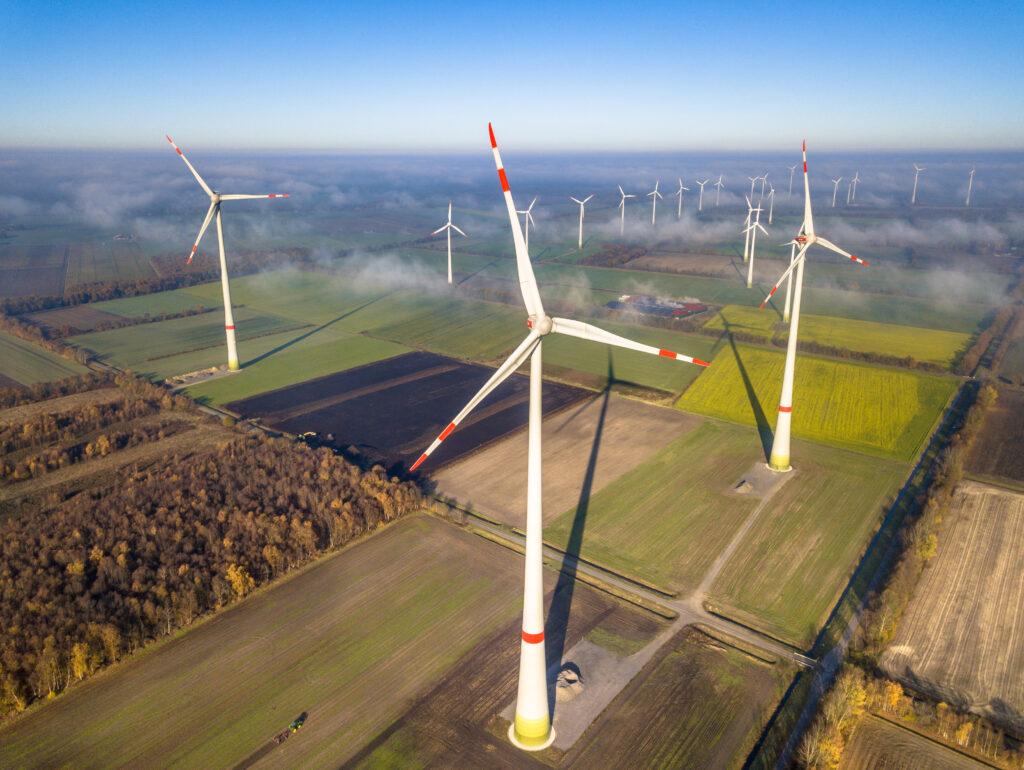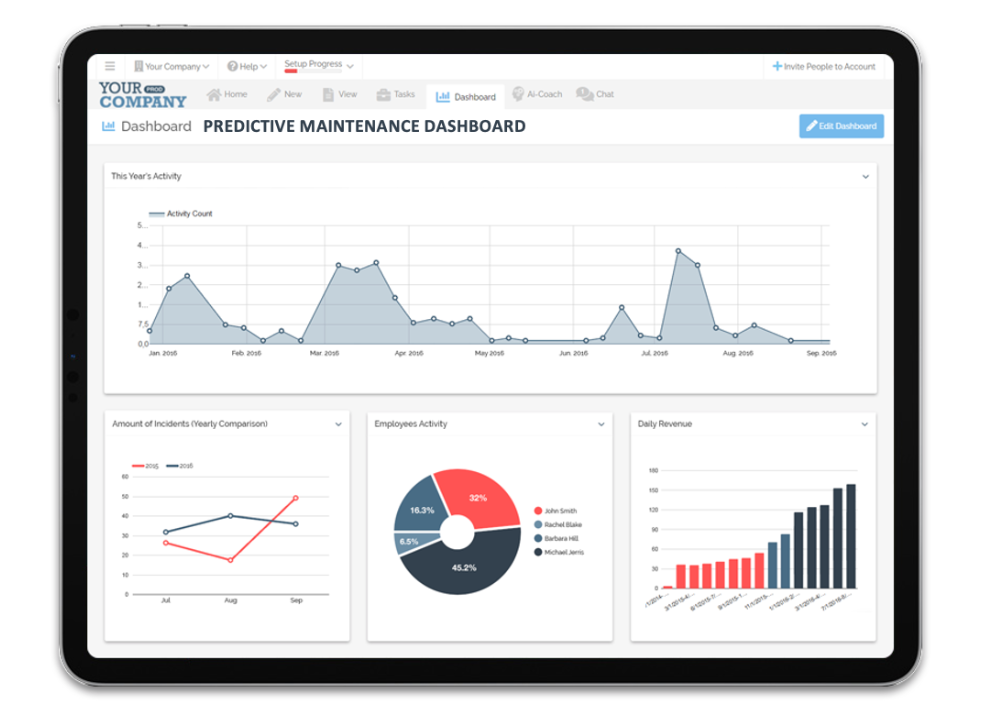Wind turbines stand tall as beacons of sustainable energy, yet they face a spectrum of maintenance challenges. From unpredictable weather conditions to mechanical wear and tear, these issues can impact their efficiency and longevity.
However, the integration of Artificial Intelligence (AI) and predictive analytics has emerged as a game-changer in mitigating these challenges, ensuring optimal functionality and reducing downtime.
Common Maintenance Issues in Wind Turbines

Before we look at predictive maintenance for wind turbines, it’s important to first understand common challenges in wind turbines. They include:
Environmental Challenges
Wind turbines operate in diverse environments, subjected to harsh weather patterns.
Extreme temperatures, high winds, and exposure to salt in coastal regions can lead to erosion, rust, and structural fatigue. These environmental stressors contribute significantly to maintenance concerns.
Mechanical Wear and Tear
Internal components of wind turbines, such as bearings and gears, endure continuous rotation, leading to mechanical wear. This can result in breakdowns, decreased efficiency, and increased repair requirements. Identifying these issues before they escalate is crucial to prevent major failures.
The Role of AI and Predictive Analytics in Wind Turbine Maintenance
Having looked at common wind turbine maintenance challenges, how can you use AI and predictive analytics to resolve them?
Proactive Maintenance
AI and predictive analytics provide a proactive approach to maintenance. By analyzing real-time and historical data, these technologies predict potential issues, allowing for pre-emptive measures to be taken. This predictive capability significantly reduces unexpected downtime and saves on maintenance costs.

Condition Monitoring
AI-driven sensors monitor various parameters, such as temperature, vibration, and lubrication levels. These sensors detect anomalies and deviations from normal functioning, enabling early detection of potential malfunctions. This real-time monitoring ensures swift intervention and minimizes disruptions in turbine operations.
Benefits of AI Integration in Wind Turbine Maintenance

As mentioned above, AI and predictive analytics contribute to wind turbine maintenance in the following ways:
- Providing a proactive approach to maintenance
- Condition monitoring
But how does this benefit your company?
First, by helping you manage costs, and second, by enhancing performance.
Cost-Efficiency
Predictive maintenance strategies driven by AI help in cost reduction by avoiding unnecessary, reactive repairs. Identifying issues before they escalate minimizes downtime and maintenance expenses, optimizing the overall operational costs.
Enhanced Performance
Efficient maintenance through AI integration results in improved turbine performance. By addressing concerns before they impact operations, turbines operate at their optimal capacity, ensuring consistent energy generation.
Challenges and Future Developments
The future of maintenance is likely to experience the following challenges and developments in AI and analytics:
Data Integration and Interpretation
The integration of AI and predictive analytics demands effective data management. Challenges arise in integrating various data sources and interpreting the vast amount of data collected. Overcoming these hurdles will be pivotal for further advancements.
Predictive Maintenance of Wind Turbines with FAT FINGER

Adopting innovative technologies like FAT FINGER solidifies the foundation for a sustainable and greener future by increasing the reliability and efficiency of wind turbines.
Understanding FAT FINGER
FAT FINGER, an advanced predictive maintenance system, leverages cutting-edge data analytics and machine learning to detect irregularities and potential issues within wind turbines.
By collecting and analyzing data in real-time, this technology effectively predicts maintenance needs before critical failures occur.
Benefits of FAT FINGER
- Foreseeing potential issues to ensure proactive maintenance: By proactively identifying potential faults, FAT FINGER technology minimizes downtime, maximizing the operational efficiency of wind turbines.
- Avoid unnecessary maintenance expenses: Predictive maintenance helps reduce repair costs and extends the lifespan of crucial turbine components.
- Improved Safety: Anticipating and addressing issues before they escalate ensures a safer working environment for maintenance teams.
Implementing FAT FINGER in Wind Farms
The seamless integration of FAT FINGER technology into wind farms requires a multifaceted approach. Installation of sensors, data collection, and analysis are pivotal for successful implementation. These sensors capture diverse operational data, which is then processed and analyzed to predict potential failures.
Features of FAT FINGER
- No-code, drag-and-drop workflow builder
- Augmented reality and workflow automation
- AI coaching
- Integrations
- Desktop and mobile compatibility
- Connection to IoT devices



